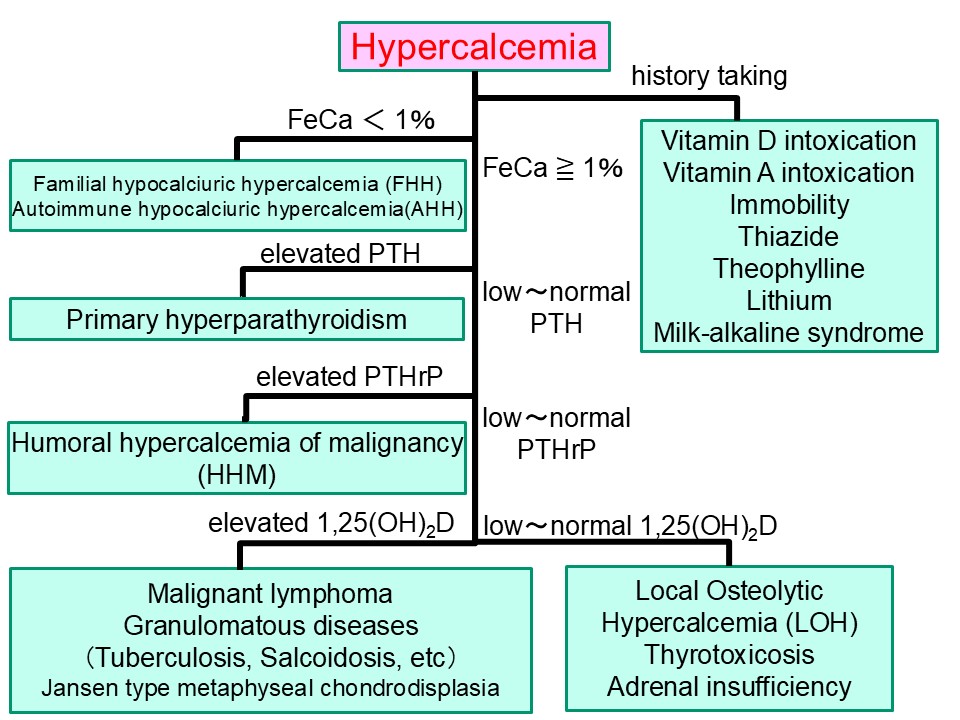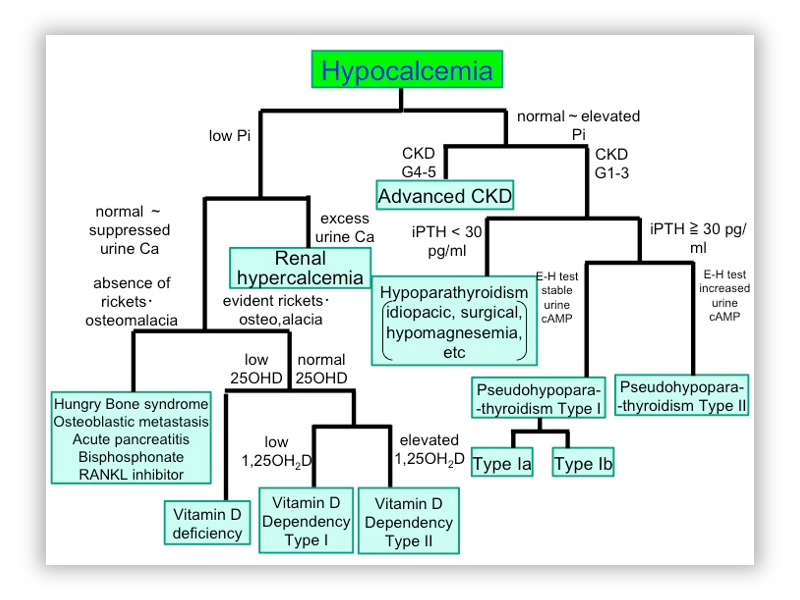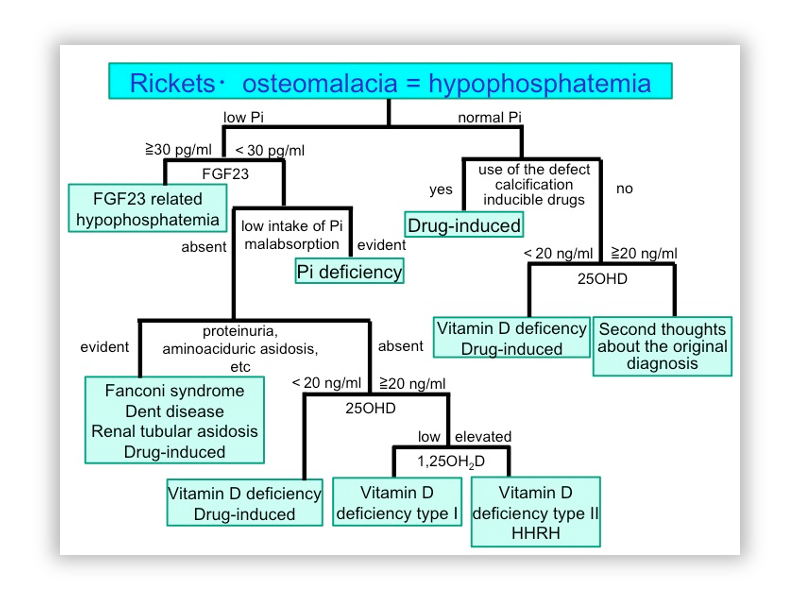Calcium/phosphate metabolic diseases
Disturbance of calcium and phosphate metabolism
In addition to the FGF23-related diseases, primary and secondary osteoporosis, our lab is also dedicated to make a proper diagnosis and treatment on the disturbance of calcium and phosphate metabolism (hypercalcemia, hypocalcemia, hyperphosphatemia and hypophosphatemia) with diverse causes including disturbance of PTH and PTHrP.
There are enormous different causes of disturbed calcium and phosphate metabolism, if include very uncommon conditions. Therefore, to process the proper differential diagnosis, it is recommended to utilize so-called differential diagnostic flowcharts (Figure. 1-3).
The original diseases which could cause calcium and phosphate disturbance include malignant diseases and the conditions which is ameliorable with the adequate treatment, so the use of the flowcharts should be referred each time not to miss these clinically important conditions, even though it’s labor intensive.
There are a flowcharts for the differential diagnosis of hypercalcemia (Figure.1), hypocalcemia (Figure.2) and rickets・osteomalacia = hypophosphatemia (Figure.3) at the bottom on this page, so please refer it to reach the appropriate diagnosis.
(The flowchart for hyperphosphatemia was spared as it is not clinically so important and difficult to narrow down the cause of hyperphosphatemia, the cause of which includes CKD3b~, insufficiency of PTH action (idiopathic hypoparathyroidism, pseudohypoparathyroidism, etc), acromegaly・gigantism, and very rare congenital low FGF23 diseases in autosomal recessive form, such as FGF23, GALNT3, KLOTHO gene mutations).
If you experience a case in which, even with the flowcharts, you find difficulty to make an adequate diagnosis, or you need some special procedure like genetic analysis to proceed on, please feel free to consult us.



